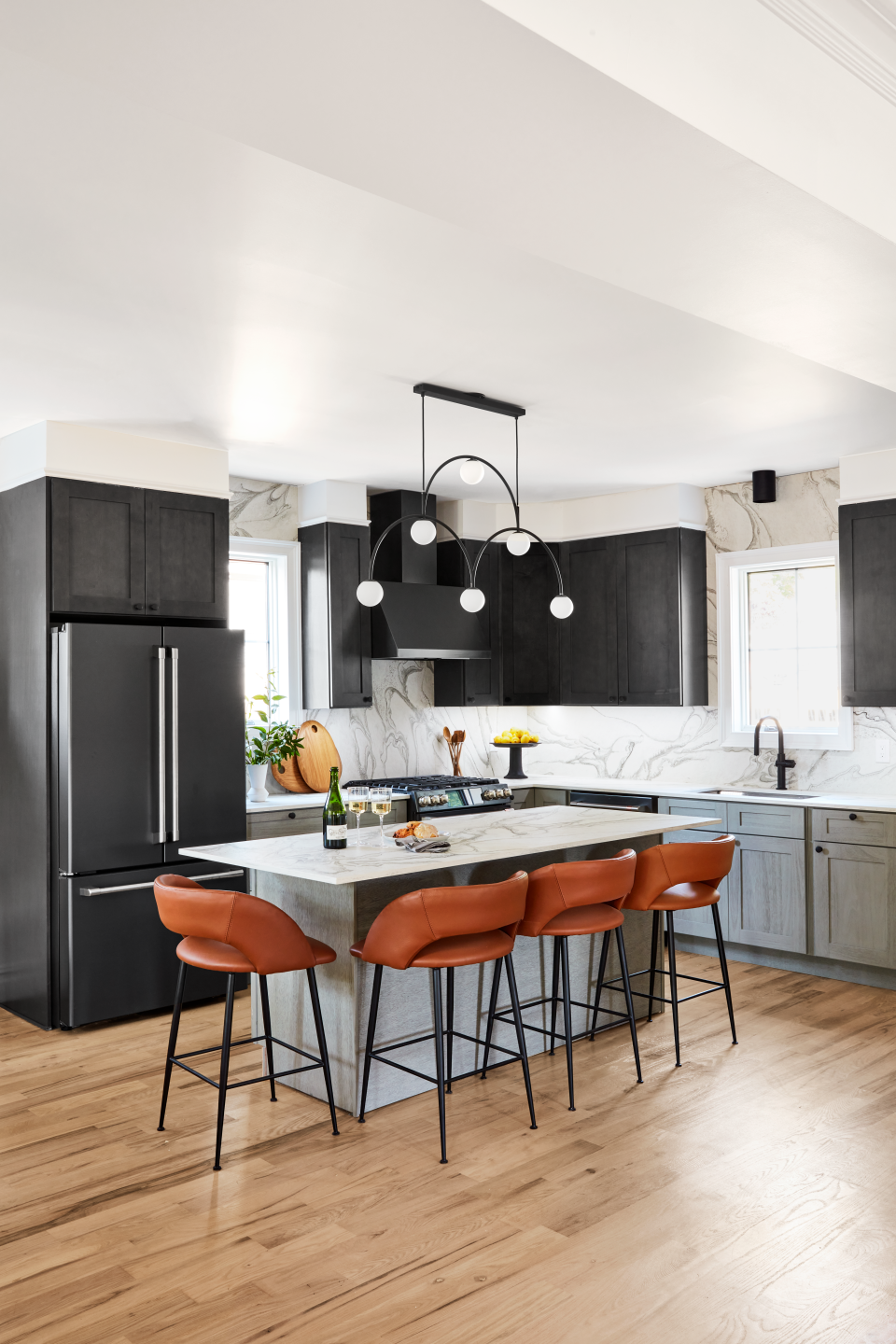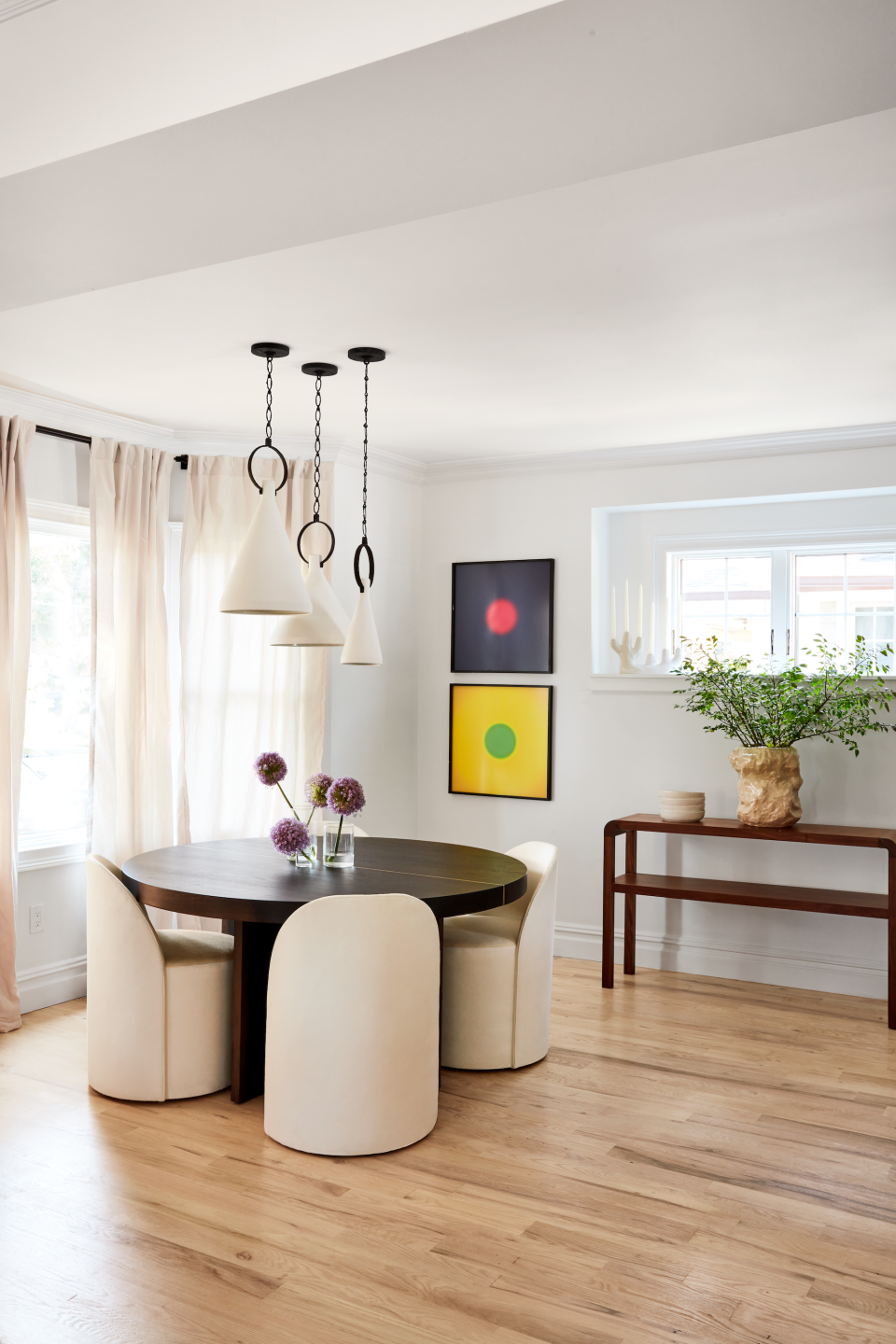How to Design a Kitchen You'll Never Regret, According to Real Simple Home Designer Delia Kenza

Christopher Testani
When designing a home, the kitchen is perhaps the most important room to get right. After all, most families spend a ton of time in this multifunctional space—it's the spot to not only cook meals, but also to do homework, take business calls, entertain guests, and hang out. With so many demands placed on this space, it means there are also plenty of opportunities to make the wrong design choices along the way. But before you start sweating, rest assured that the surefire way to make all the right design moves is to know yourself, your family, and how you'll use this space. Once you have that figured out, smaller choices like countertop materials, cabinets, and lighting should all become a little easier.
To navigate the complicated world of kitchen design, we reached out to Delia Kenza, the Brooklyn-based interior designer behind the kitchen at the 2021 Real Simple Home. Here's her best advice for avoiding common kitchen design mistakes and creating a regret-proof kitchen you'll love.
RELATED: 10 Things That Can Make or Break Your Kitchen Remodel
Let your lifestyle be your guide.
"The kitchen layout is very personal and will vary from person to person—plan for your lifestyle," says Kenza. Think about how you truly use this space, rather than getting aspirational or letting purely aesthetic choices guide the way. For example, if you entertain often and tend to congregate in the kitchen, prioritize an island with plenty of seating so guests can comfortably gather around.
Similarly, if you're a messy cook, like to chop directly on the counter, and aren't in the habit of wiping spills right away, maybe reconsider that marble countertop, which will stain easily and show scratches. Let your lifestyle guide you, and suddenly most decisions—from what type of oven to get, to the flooring material—will become a little easier to make. The one caveat: in order to pick the material that's the best match, you have to know your lifestyle and know the materials. For guidance on the latter, a professional interior designer can help.
Be realistic about your storage needs.
In general, most of us underestimate how much stuff we own. To outfit your kitchen with adequate storage, start with a realistic estimate of how much you have, then work storage into the design plan. Do you have an extensive collection of pots and pans? Incorporate plenty of lower cabinets, or else display pretty copper cookware using an overhead rack.
Unfortunately, designing a functional space that will serve your family longterm sometimes means bucking the latest kitchen design trends. "If storage is a significant necessity, you should ignore the no-upper-cabinet trend and install uppers to maximize storage," says Kenza. Open shelving can look incredible, but you'll end up cursing them as soon as your limited cabinet space starts to overflow.

Christopher Testani
Don't forget the task lighting!
Again, think about all the functions you want your kitchen to serve, then choose task lighting to match. "Areas that get the most use should be well lit, like the sink area and the island," says Kenza. "For counters, minimal under-cabinet lighting is excellent, and remember the lighting you select should be functional but beautiful, so have fun and think outside the box."
In the Real Simple Home kitchen, a statement-making chandelier with a scalloped design illuminates the island, while a trio of pendant lights floats above the dining table. Under-cabinet lighting helps you see what you're chopping, while a fixture above the sink helps you see what you're washing. Vary the type of task lighting you use (pendants, sconces, flush mounts), while sticking to one cohesive style.
